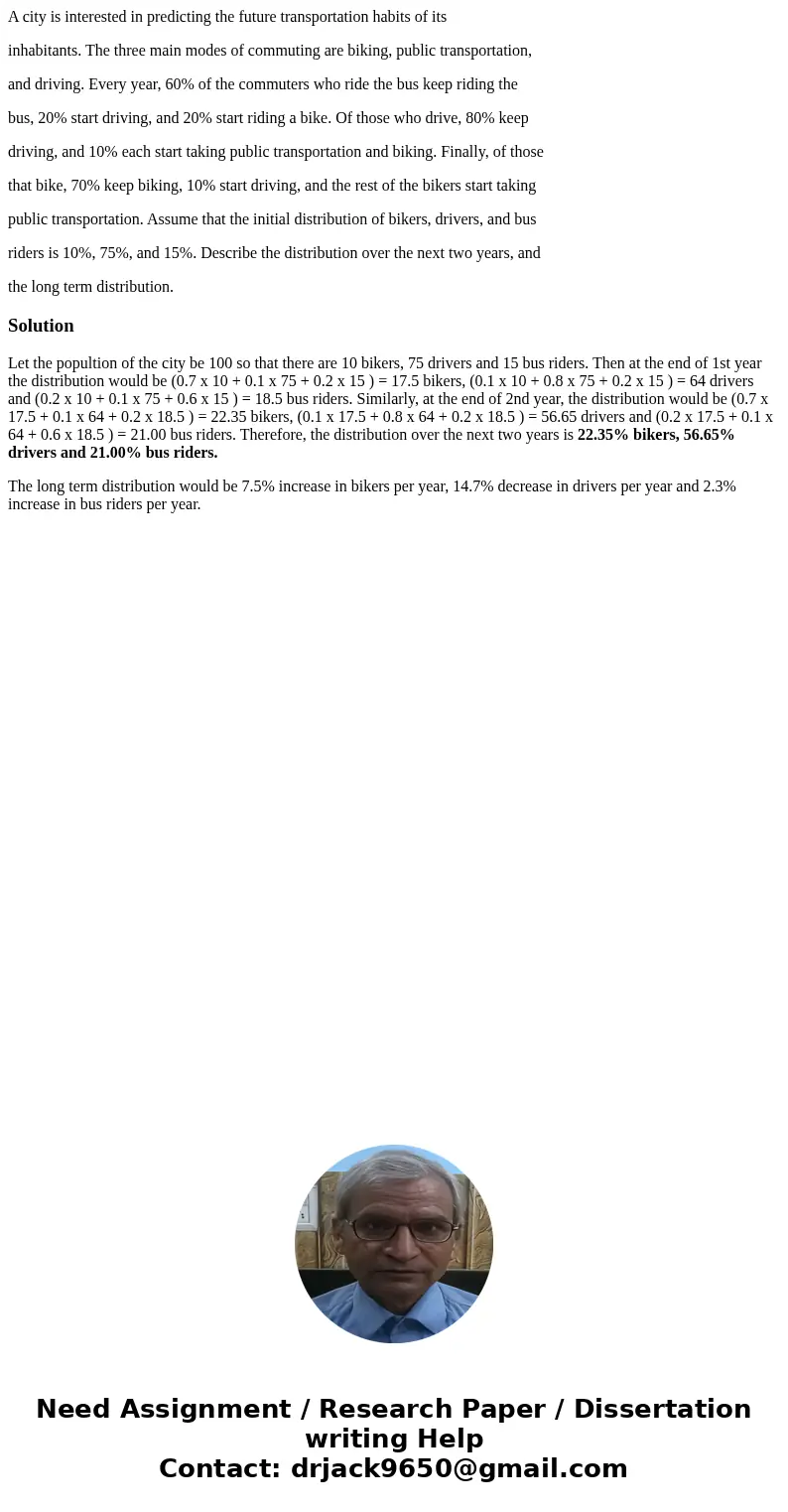A city is interested in predicting the future transportation
A city is interested in predicting the future transportation habits of its
inhabitants. The three main modes of commuting are biking, public transportation,
and driving. Every year, 60% of the commuters who ride the bus keep riding the
bus, 20% start driving, and 20% start riding a bike. Of those who drive, 80% keep
driving, and 10% each start taking public transportation and biking. Finally, of those
that bike, 70% keep biking, 10% start driving, and the rest of the bikers start taking
public transportation. Assume that the initial distribution of bikers, drivers, and bus
riders is 10%, 75%, and 15%. Describe the distribution over the next two years, and
the long term distribution.
Solution
Let the popultion of the city be 100 so that there are 10 bikers, 75 drivers and 15 bus riders. Then at the end of 1st year the distribution would be (0.7 x 10 + 0.1 x 75 + 0.2 x 15 ) = 17.5 bikers, (0.1 x 10 + 0.8 x 75 + 0.2 x 15 ) = 64 drivers and (0.2 x 10 + 0.1 x 75 + 0.6 x 15 ) = 18.5 bus riders. Similarly, at the end of 2nd year, the distribution would be (0.7 x 17.5 + 0.1 x 64 + 0.2 x 18.5 ) = 22.35 bikers, (0.1 x 17.5 + 0.8 x 64 + 0.2 x 18.5 ) = 56.65 drivers and (0.2 x 17.5 + 0.1 x 64 + 0.6 x 18.5 ) = 21.00 bus riders. Therefore, the distribution over the next two years is 22.35% bikers, 56.65% drivers and 21.00% bus riders.
The long term distribution would be 7.5% increase in bikers per year, 14.7% decrease in drivers per year and 2.3% increase in bus riders per year.

 Homework Sourse
Homework Sourse